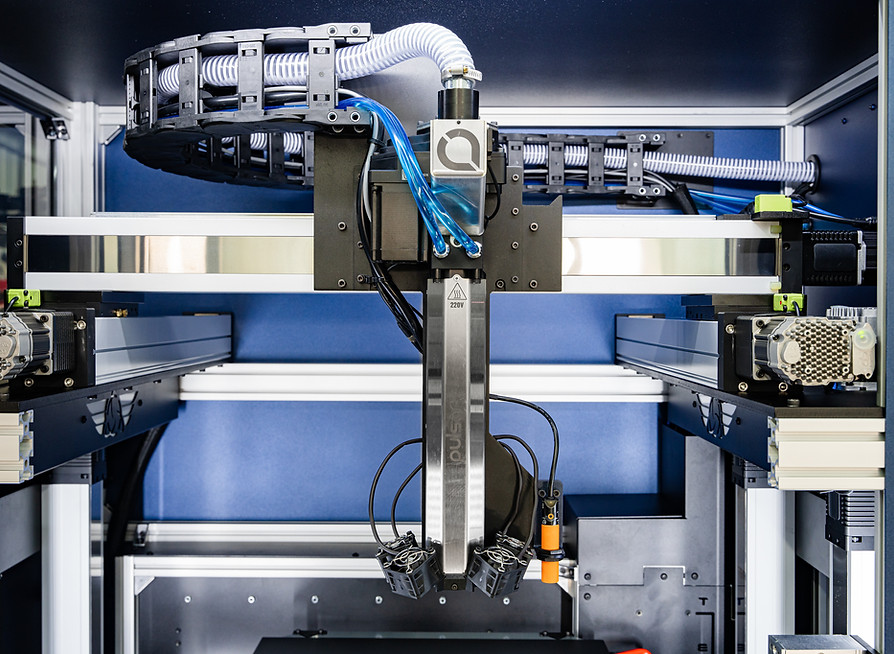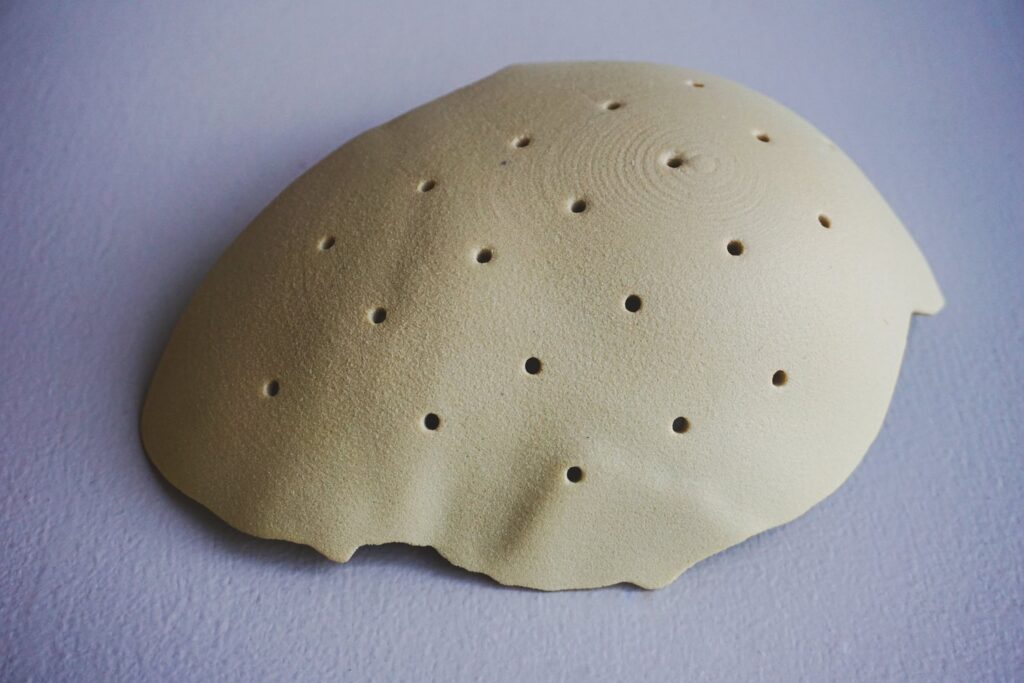In our series of interviews and questionnaires on the state of additive manufacturing (AM) in 2024, two critical themes emerged: tailwinds and applications. The former relates to navigating the dynamic landscape of global economics and geopolitics, while the latter is about the renewed emphasis on applications in the 3D printing sector.
The key question posed was how to adeptly maneuver through the tailwinds and headwinds created by macroeconomic changes, monumental global shifts, and complex geopolitical scenarios. In this global superstorm, we in the AM industry find ourselves as mere flotsam and jetsam, striving to respond effectively to forces beyond our control.
Simultaneously, there was a clear shift in focus towards applications within the 3D printing realm. The conversation wasn’t just a broad, indiscriminate look at potential uses but rather a more logical, concentrated exploration of relevant and impactful applications. This approach underscores a general consensus among experts on the importance of prioritizing key areas.
Drawing from the diverse perspectives of numerous 3D printing experts, we can chart a more mature, mission-driven path forward. This collective wisdom guides us to not only address the immediate challenges but also to strategically focus on what truly matters in the evolving world of 3D printing.
Ted Sorom, CEO of the binder jet tooling startup Mantle, thinks that reshoring and AI will provide AM with strong tailwinds:
“2024 will be a year when positive macro trends will bolster the need for 3D printing, but these positive forces likely won’t offset the challenges faced by many individual companies in the market,” Sorom said. “The desire to bring manufacturing back to local economies is greater than at any time in recent history. These are beneficial tailwinds, but the challenges that many 3D printing companies face are real. The flow of VC funds has dried up, and the public markets are rewarding profitability over long-term vision, thus valuing public additive companies at just over their cash on hand. While adding generative AI and LLMs to pitch decks may help seed and pre-seed companies land investment, it won’t mask the broader issue that additive manufacturing companies need to stop focusing on the promise of the technology solving a broad range of manufacturing challenges and instead start delivering targeted cost-effective solutions that traditional manufacturers and OEMs want, dare I say need, to adopt to stay competitive. I believe those companies that deeply understand a specific application and can deliver a cost-effective and efficient solution via additive manufacturing will succeed in 2024. In areas like the space industry, where companies are experiencing success, consolidation will likely be necessary as many equipment manufacturers chase the same customers and applications. In areas where no killer application has been found, even consolidation won’t be enough to guarantee survival in a year where access to capital will be limited.”
Guillaume de Calan, CEO of ceramics 3D printing company Nanoe, states that a lack of venture capital investment may be bad for some but not for all. “For players like us that are trying to be profitable from day 1, that’s actually a good news, since it will bring back some sense in the market on pricing and expectations from the customers,” de Calan said. This is a good point, given that, though many in the industry bemoan the reduction in private funding, such a trend is actually beneficial for more bootstrapped and frugal businesses.
“We keep looking for markets where the design freedom brought by AM is such a distinctive advantage that it will counterbalance the cost and risks of switching to a new manufacturing technology,” de Calan continued. “As an example, we see huge potential for our 3D printing materials for [radio frequency (RF)] applications. That means any sort of antennas, radar, and telecommunications devices that can be made more efficient, smaller, and lighter thanks to 3D printing. We’ll keep investing in that vertical both in marketing and new product development.”
I wholeheartedly concur that the the RF space presents a vast opportunity for 3D printing. The demand for RF components is set to surge, given their necessity in a wide array of objects including vehicles, satellites, airplanes, and drones. 3D printing offers a cost-effective method to produce these components. Additionally, it allows for enhanced performance and reduced mass of these parts, which is a significant advantage in this field. In this context, I believe that Nanoe’s approach of targeting technology and optimizing the path to market is indeed the right strategy.
The observation is quite insightful, as well, and it’s true that many have moved away from the “one box to rule them all” approach. Scott De Felice, CEO of Oxford Performance Materials, which specializes in in PEKK implantology, seems to have embraced an even simpler route to success.
“As a customer of 3D printing equipment, it is essential that suppliers establish sustainable business models,” De Felice said. “I don’t really have a view on how they get there, but that’s the goal. Suppliers that truly commit to their technologies, offer world-class support, impeccable quality, and operate profitably will win the day. Right now, that is an exceedingly short list.”
Scott’s point is another harsh truth, but a very fair one. It’s easy to get swept up in the excitement of our groundbreaking technology and its myriad possibilities. However, the stark truth is that if our goal is to create something as critical as skull implants, excellence in both our products and services is non-negotiable. The analogy with skydiving is surprisingly apt—despite the thrill it offers, one cannot afford to compromise on the quality of the equipment. This mentality has, unfortunately, infiltrated the 3D printing industry. The narrative of 3D printing is so captivating that the necessity for the final product to function effectively can sometimes be overlooked, which is a mindset that needs urgent correction.
Consultant Phil Reeves had some more sobering insights.
“In 2024, someone will finally undertake a proper third-party analysis of construction 3D printing and either prove it has some economically and socially viable applications, albeit it seems to require constant manual intervention from a small team of highly skilled operators,” Reeves said. “More likely, they will prove that a semi-skilled team of the same number of people using concrete blocks and mortar are far quicker, less wasteful, and more affordable. I expect we will see the plethora of new vendors offering binder into powder solutions whittle down quickly when they realize that it is a technology looking for an application and has been for almost 25 years. We will probably see a few of the post-SPAC and series D+ VC-funded whales beaching on the sand and dying a very public and undignified death. For the establishment, it will be business as usual: incremental change dressed up as cutting-edge leaps forward. I do think (and hope) we will see more emphasis on genuine sustainability topics such as energy and resource efficiency, waste mitigation, and part optimization. Of course, AI will be embedded into everything, even things that don’t need it.”
The recurring theme among various experts was the importance of cutting through superfluous elements to concentrate on what truly matters. If we were to synthesize all the advice into its most concise form, it would emphasize: securing our foundations (batten down the hatches), committing to excellence, strategically choosing battles we are poised to win, deliberately seeking practical applications, avoiding misguided pursuits of success, and not relying solely on AI, but rather expecting benefits from reshoring. These key points were consistently mentioned, and if distilled to their core, they offer a pragmatic yet valuable message to carry forward into the new year.
Subscribe to Our Email Newsletter
Stay up-to-date on all the latest news from the 3D printing industry and receive information and offers from third party vendors.
Print Services
Upload your 3D Models and get them printed quickly and efficiently.
You May Also Like
U.S. Navy Lab Uses 3D Printing to Reduce Tooling Lead Time By Over 90%
The F-35 Lightning II Joint Program Office (JPO), responsible for life-cycle management of the key fifth-generation joint strike fighter (JSF) system used by the U.S., its allies, and its partners,...
Etsy Design Rule Change Reduces Selection of 3D Printed Goods
Online marketplace Etsy has implemented a rule change requiring all 3D printed goods on the site to be original designs. The update to the site’s Creativity Standards states, ¨Items produced using...
Honeywell Qualifies 6K Additive’s Nickel 718 for 3D Printed Aerospace & Defense Parts
6K Additive is renowned for manufacturing sustainable additive manufacturing (AM) powder, and offers a wide portfolio of premium metal and alloy powders that include titanium, copper, stainless steel, and nickel,...
MetalWorm Sells WAAM Systems to Research Institutes in Brazil and Malaysia
Turkish WAAM firm MetalWorm has sold a system in Malaysia and another in Brazil. This is an excellent example of a few emerging trends in additive. Firstly, WAAM was experimented...




































